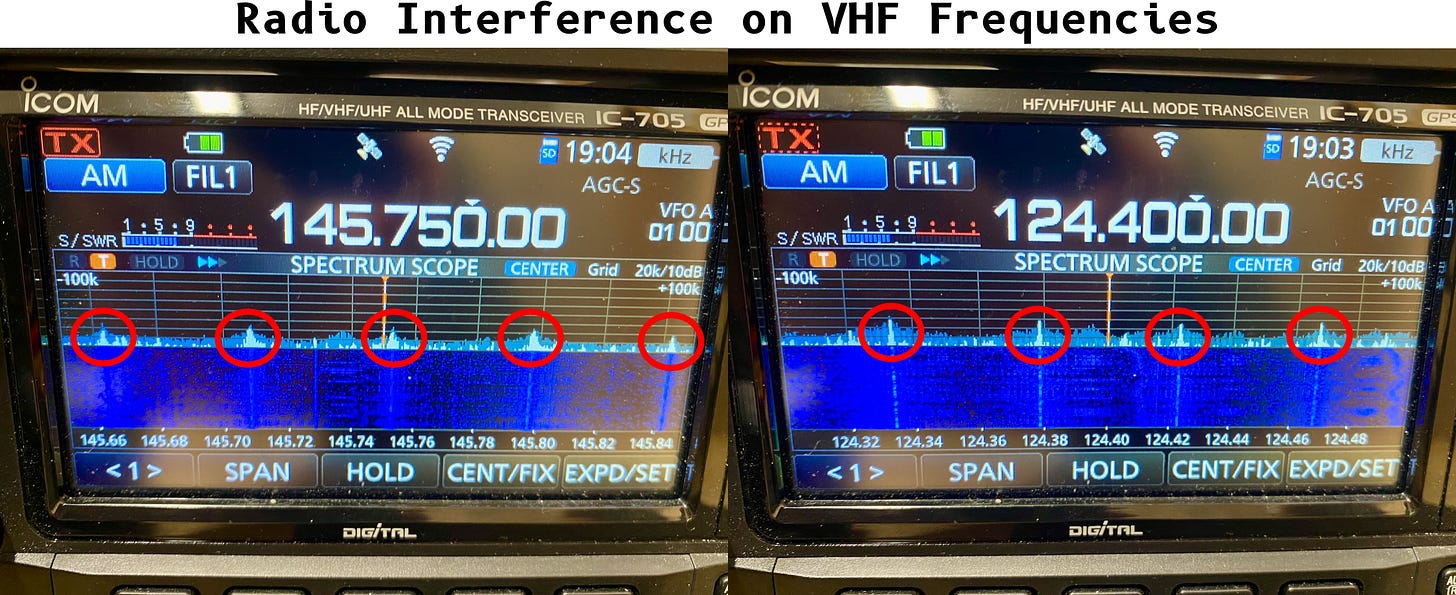Eliminating Radio Interference from Apple charger
Apple's product design teams should do a better job eliminating unwanted radio frequency emissions from their product!
Manufacturers are cutting corners to save costs. In today’s story our shared radio waves are one of the victims of poor design choices. Sadly Apple has joined the club by skipping a crucial component on their wireless “Apple MagSafe Charger”.
I bought this forementioned charger and mounted it into my car. Wireless charging and being able to use phone as a navigator was a tempting option. However, when I also had my amateur radio handheld tranceiver inside with me monitoring the local frequencies I noticed the scan stopping on 2m band (145 MHz) and awful noise was getting through the squelch. This radio interference was also present on the aviation frequencies (around 124 MHz). We can assume this is a problem for every VHF radio user.
Bit of Theory
The wireless charging (Apple’s Magsafe as well as other chargers implementing Qi charger specification) works with radio frequency to produce magnetic field. The flat circle where you connect your phone is a coil and a high frequency signal (105—205 kHz) is pushed into it making the coil radiate magnetic field which in turn is then captured by the device to be charged and turned into electricity.
And when there’s a high frequency signal the connecting cables can start to act like antennas which radiate both the fundamental frequency as well as many harmonics of it.

The Solution
The ultimately best solution is not to buy this piece of crap and demand loudly that manufacturers properly shield their products in the first place.
However, I have already bought this product and the other pieces for my car mount. So I was invested. I accepted the challenge to learn something new and try eliminate this issue. Maybe Apple’s design team can get some good ideas from this article.
One way for damping the offending interference is to use a component called ferrite bead. The offending wire which is working as an antenna is wrapped around a correctly selected ferrite bead until the problem is gone. My research led me to order a snap-on ferrite of mix 31 (costing 2.21€, details below) and wrapping the charger’s USB wire three times around it. I could wrap the cable five times, but then the remaining cable is quite short.

The Results
It is not worth it to try eliminate the interference fully. It might also be next to impossible. But good enough results can be achieved by dampening the problematic frequencies enough. And enough for me was when I could no longer reproduce the issue with my handheld radio. We can also compare the screenshots below to screenshots above and notice that the largest spikes have been lowered down.
The Mix 31
Ferrites come in different flavors and choosing the correct mix is crucial to achieve the wanted results. I spent good amount of time searching the world wide web reading as much as possible and diving into product specifications to learn even more. My quest was to find a product which has the most impedance on our offending frequency (145 MHz). The higher the impedance in our use case, the more dampening we’ll get.
I chose Fair-Rite snap-on ferrite part number 0431167281 for this interference (as well as others in the future).
The datasheet of this product contains the following graph:
and we focus our eyes to frequencies between 100—200 MHz and specifically to around 145 MHz as indicated by red circle in the diagram. N=1, N=2, N=3 means how many wraps we have around the ferrite bead and in our case we had three, but two might be enough if we trust manufacturer’s specifications. In the graph we see that our impedance is already going down fast but it is still about 1000 ohms. And my lab experiments showed me that the problem was eliminated.
But it really bothers me to buy 40€ product and I still need to fix it with component costing over 2€. I expect Apple could solve this problem with much cheaper and hidden it somewhere cleverly.





Is the efficiency of the charger altered by this solution?